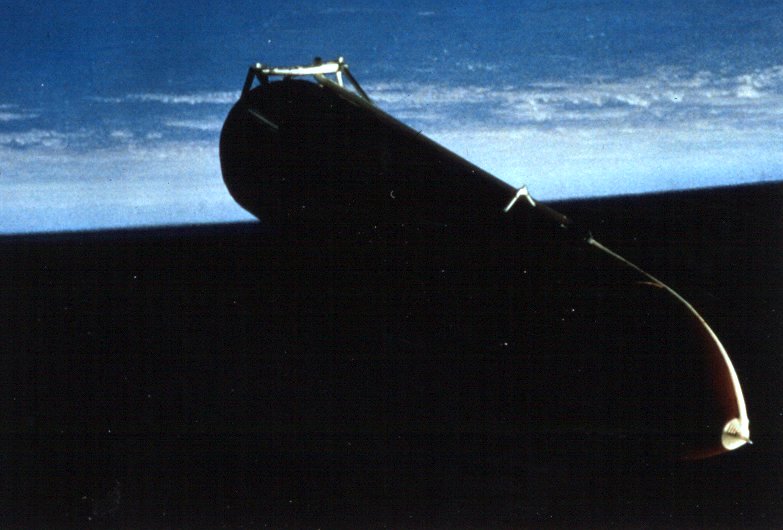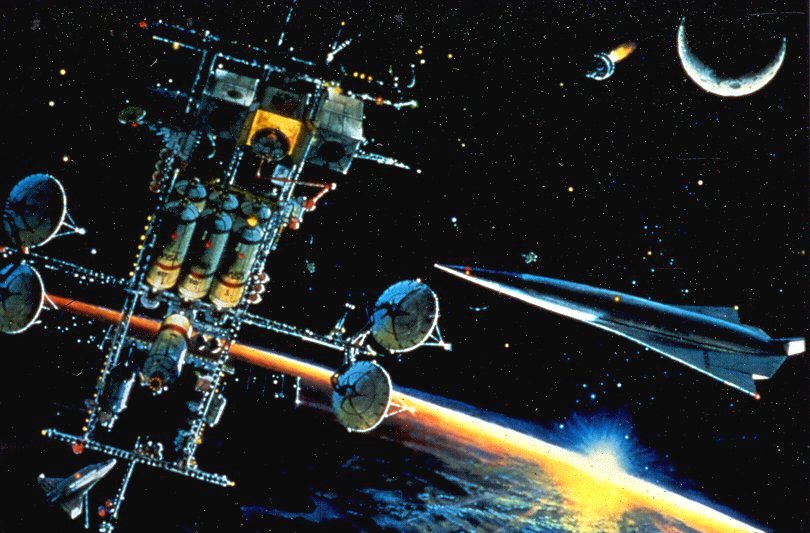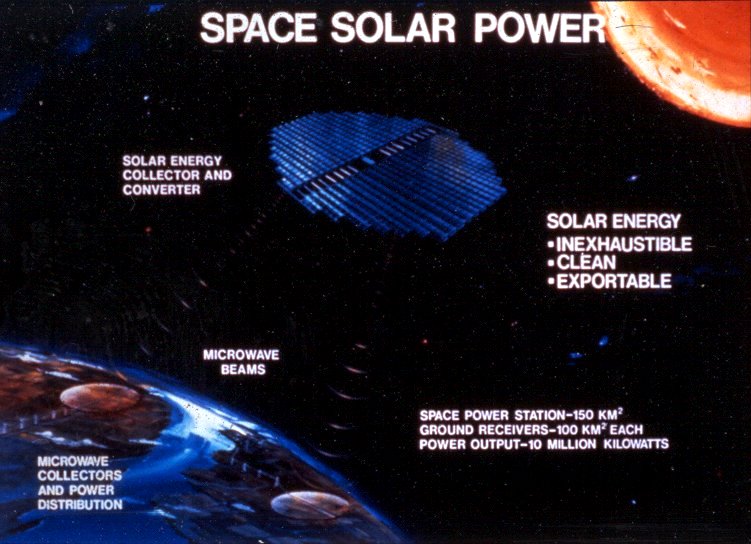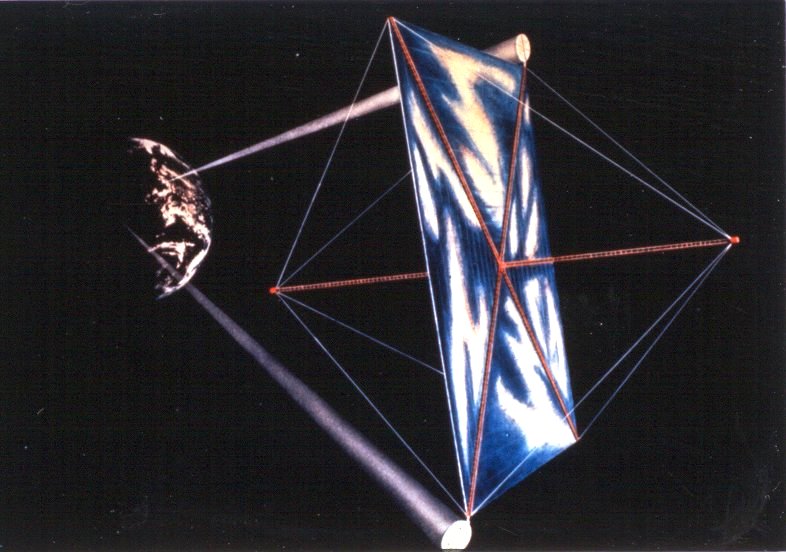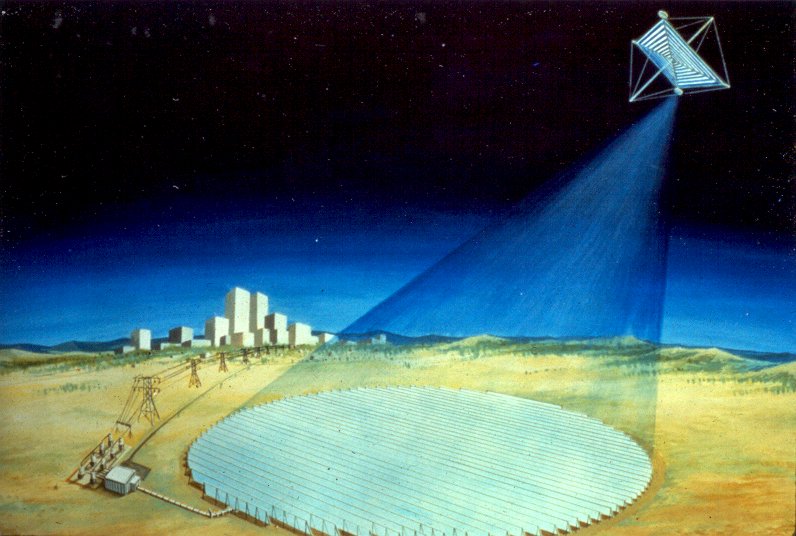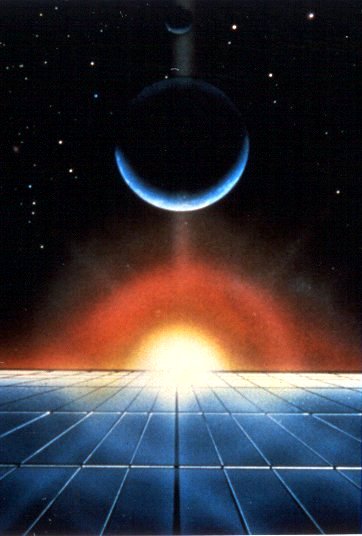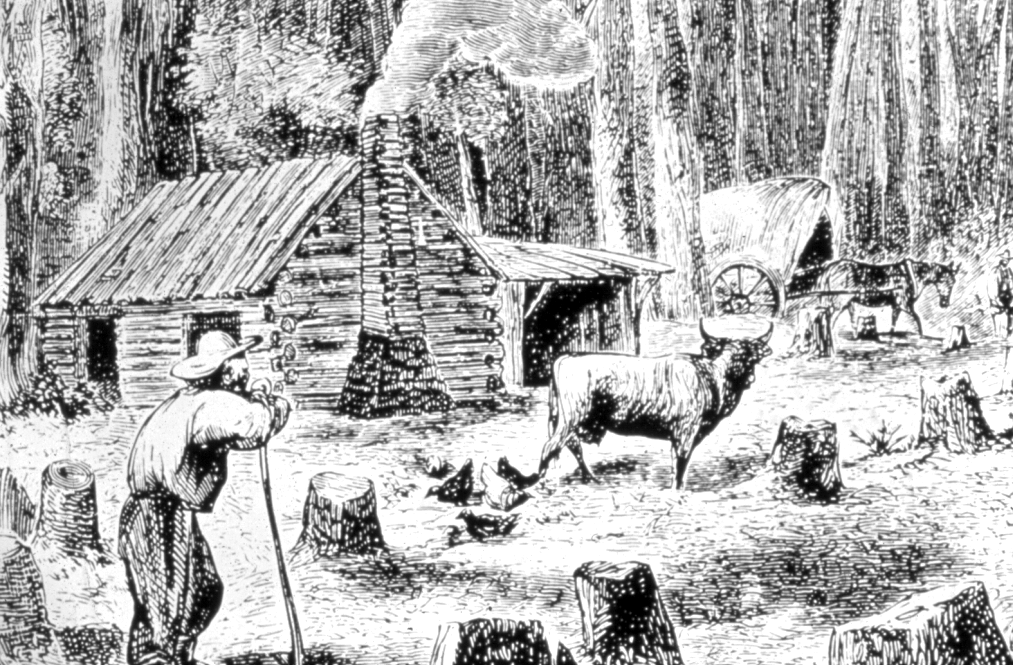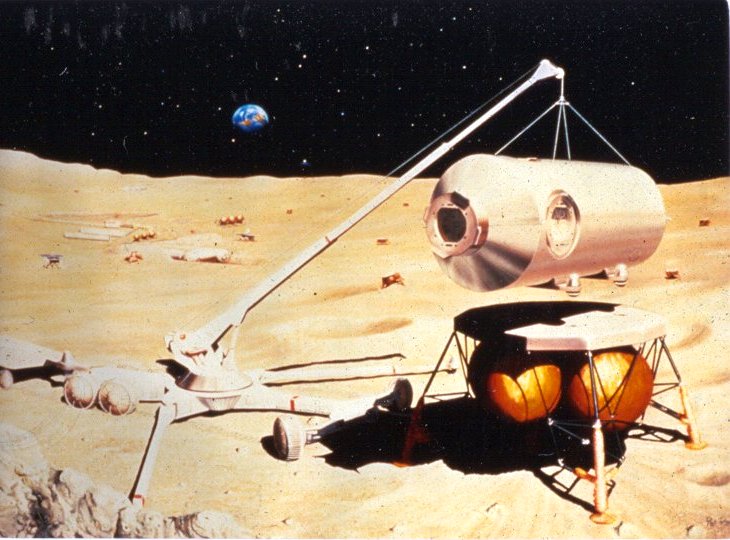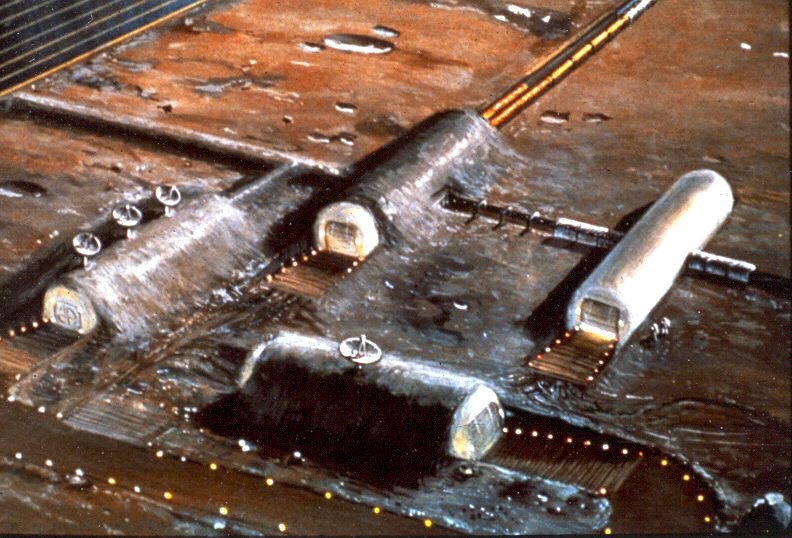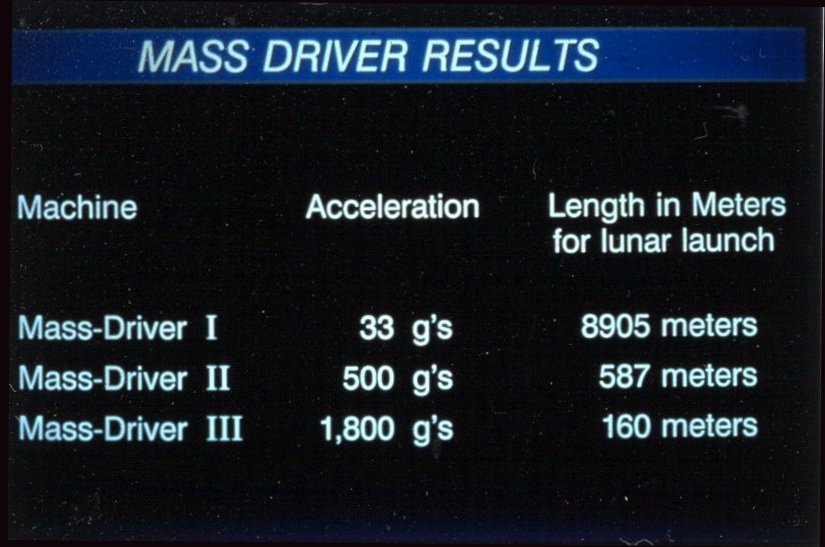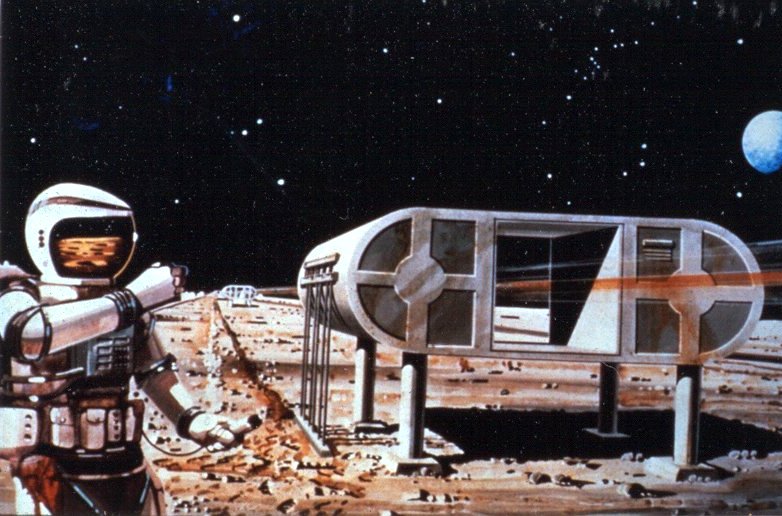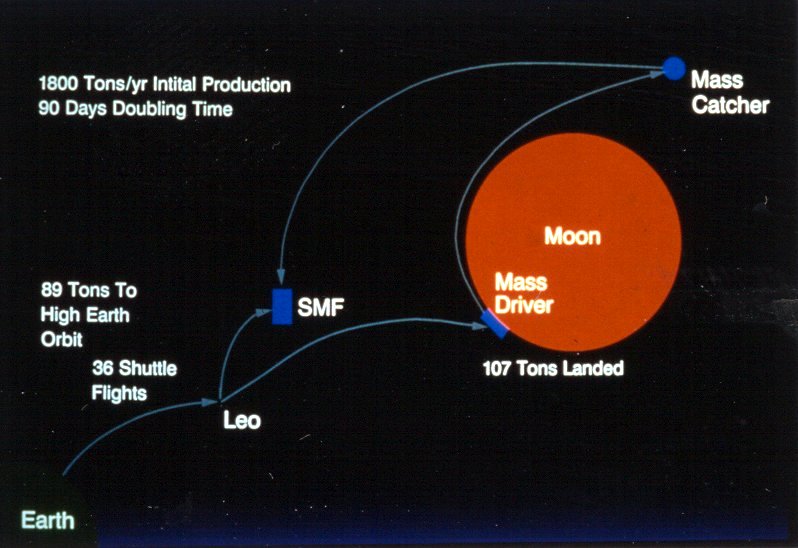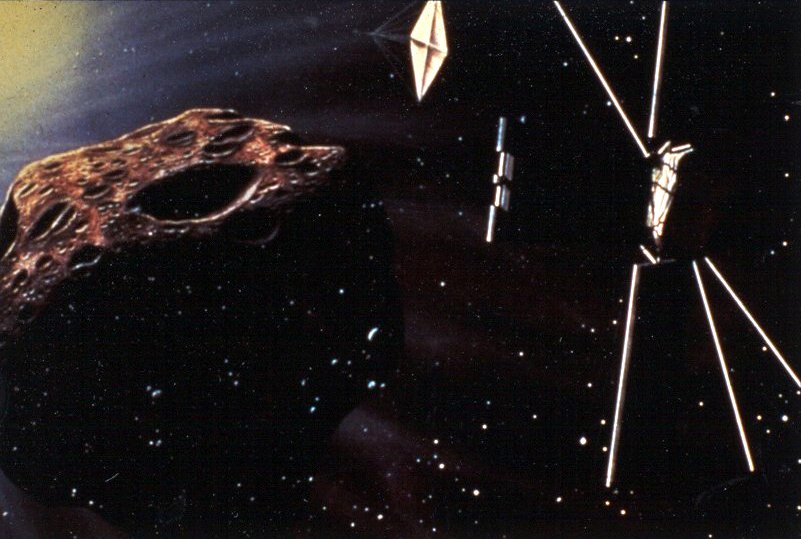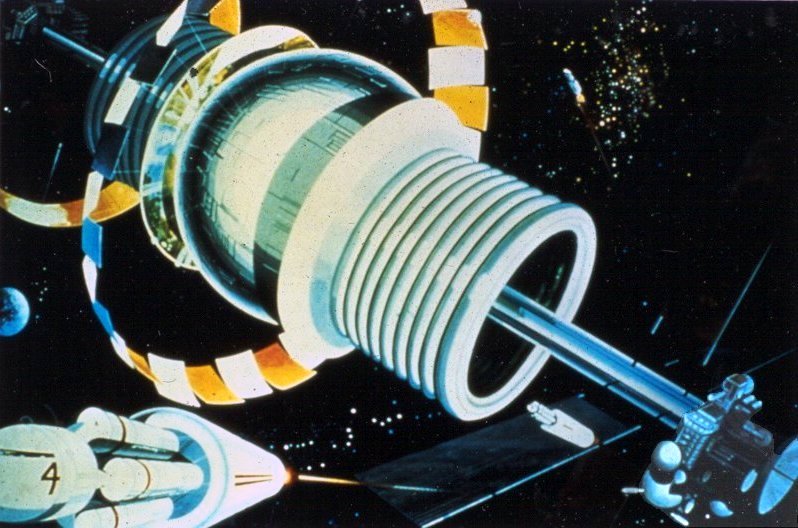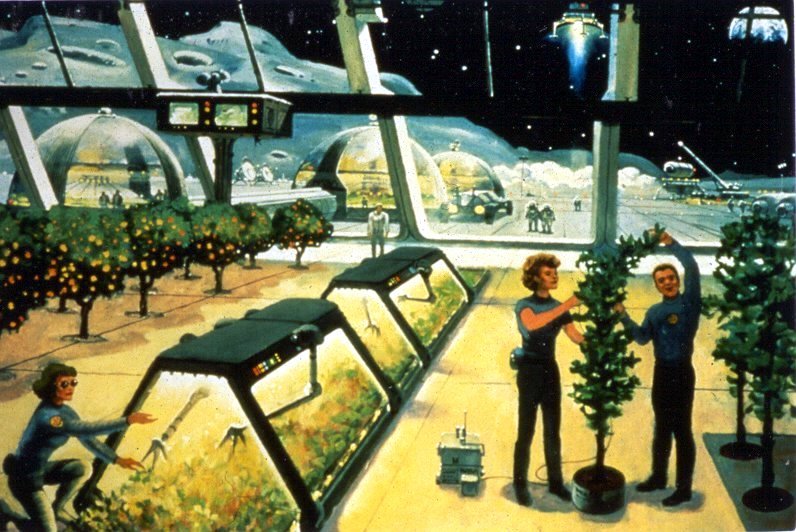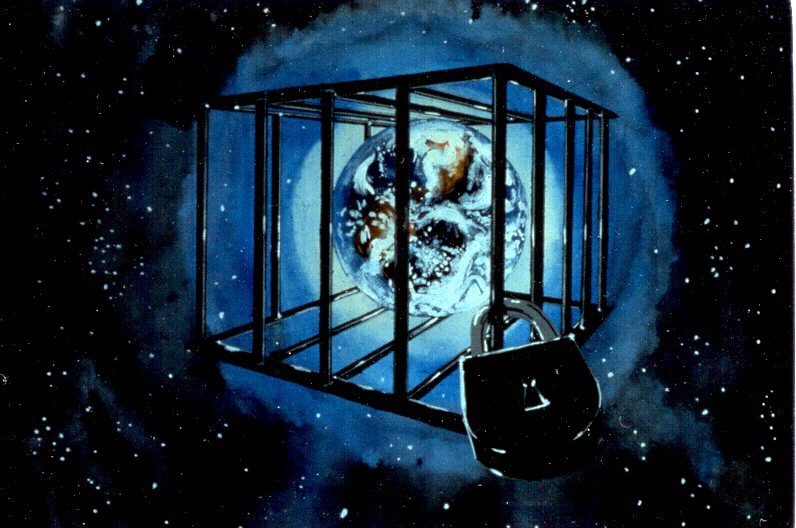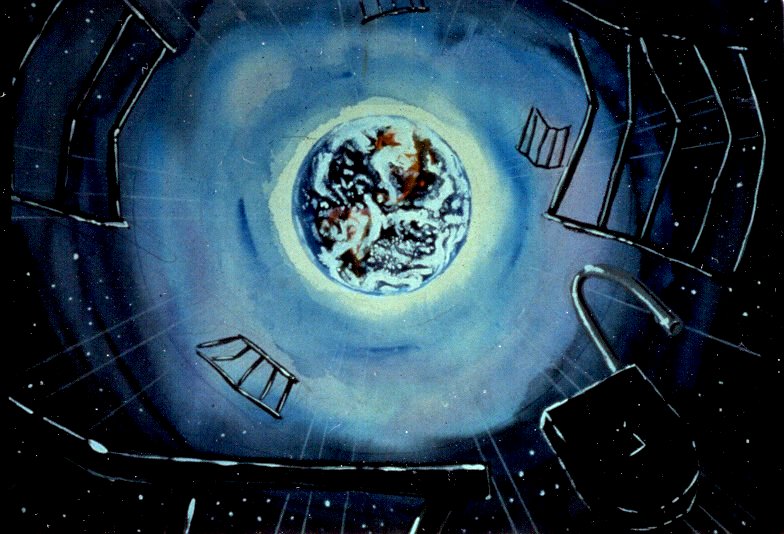
These images are licensed under a Creative Commons Attribution 3.0 United States License.
Space Shuttle External Tank – Currently, the Shuttle’s ET achieves 99% of the energy needed to reach orbit. The remaining 1% is withheld, which results in the ET re-entering, fragmenting, and crashing into the Pacific Ocean.
783 by 530 JPEG (57kb)
External Tank Station – A space shuttle approaches a free-flying platform constructed from shuttle external tanks carried to orbit. Shuttle external tanks hold promise as a source of structural material and/or near ready-made station modules.
543 by 800 JPEG (262kb) or 326 by 480 JPEG (105kb)
External Tank Platform- Another structure based upon spent shuttle external tanks. SSI has long supported using external tanks for boot-strapping space development. Shuttle external tanks are already carried almost all the way to orbit. It is a shame to waste all that effort.
550 by 800 JPEG (146kb) or 330 by 480 JPEG (62kb)
Low Earth Orbit Spaceport – The existing Alpha space station is fine for research, but we are in need of a space station optimized as a transportation node. An equatorial orbit may be best for supporting traffic to higher orbits, the moon, and beyond.
810 by 533 JPEG (92kb)
Solar Power Satellite – A SPS in Geosynchronous Earth Orbit is in sunlight 99% of the time. Unlike ground-based solar arrays, it can generate electricity continuously.
751 by 544 JPEG (80kb)
Power From Space – A Solar Power Satellite generates clean, inexhaustible power for Earth.
1270 by 1017 JPEG (165kb) or 599 by 480 JPEG (57kb)
SPS Construction Base – Building Solar Power Satellites in Earth orbit will require massive orbital infrastructure.
1263 by 972 JPEG (437kb) or 624 by 480 JPEG (101kb)
Power Beaming – A SPS beams power to Earth via two safe, low-power microwave beams.
786 by 552 JPEG (72kb)
Rectenna – SPS power is beamed to a receiving antenna or “rectenna” on Earth. The rectenna converts the energy back into electrical current, which is fed into the power grid. The power beam would be safe for insects and birds flying through, and would not reach plant life growing under the rectenna.
796 by 536 JPEG (79kb)
Clean, Safe Power From Orbit – A Solar Power Satellite safely feeds the energy needs of a complex world. A small plane is shown flying near a transmission area, though even flying through the area would be safe.
1189 by 813 JPEG (325kb) or 640 by 438 JPEG (122kb)
A Shining Dream – SPS remains an as-yet-unrealized solution to both global energy needs and to the greenhouse gas problem. The primary obstacle is the enormous lift costs. A cheaper source of construction materials than the Earth must be found.
362 by 536 JPEG (32kb)
Living Off the Land – When European settlers came to the New World, they didn’t bring lumber on their sailing ships. They brought axes, and felled trees on their land to build their log cabins. Similarly, when we begin to truly work and live in space, we will stop bringing everything with us, and instead make maximum use of locally-available resources.
1013 by 665 GIF (722kb)
Using Material From Earth is Expensive – Due to the Earth’s much greater gravity, lifting items into orbit from the Earth is much costlier than obtaining building materials from the Moon (or asteroids).
1270 by 781 JPEG (198kb)
or 640 by 394 JPEG (97kb)
The Moon Beckons – Man has long dreamt of moving out from the Earth, his cradle. The Moon’s presence in the sky has served as a constant beacon attracting man’s dreams of his future.
1237 by 861 JPEG (410kb) or 640 by 445 JPEG (139kb)
Astronaut Considering the Next Step – An astronaut in Earth orbit ponders her next journey: a return to the moon. 362 by 536 JPEG (43kb)
Reusable Lunar Lander – A crane offloads a habitation module from a lander. This lunar effort must proceed in a more sustainable way, for this time we are on the moon not for political purposes, but to do economically valuable work.
730 by 540 JPEG (83kb)
Using Soil for Protection – Lunar soil or “regolith” will be piled up over the modules. This will protect the inhabitants from both cosmic rays and micrometeoroids, as well as reduce temperature swings. As it happens, dust in a vacuum is excellent insulation.
792 by 538 JPEG (99kb)
Lunar Paydirt – The rich Lunar Soil is composed of many minerals that are the raw materials required for life support, rocket fuel, construction and development. Methods of extracting these raw materials have already been developed using existing technology.
1221 by 801 JPEG (217kb) or 640 by 420 JPEG (87kb)
Lunar Mining – A mining base powered by solar collectors provides the materials for further construction on the Moon and in Earth orbit.
1270 by 893 JPEG (621kb) or 640 by 450 JPEG (206kb)
The Mass Driver – SSI has built progressively more powerful models of the mass driver, a kind of electromagnetic accelerator. Such an electrical catapult could economically launch lunar material into space. Mass drivers with the same accelerating power as has been demonstrated in the lab can do this within reasonable lengths.
825 by 547 JPEG (73kb)
Mass Drivers Deliver – Electromagnetic mass drivers using solar power provide low cost transportation of materials to space construction sites.
1270 by 877 JPEG (460kb) or 640 by 442 JPEG (153kb)
Astronaut at Far End of Mass Driver – Deflection plates near the end of the mass driver make minute adjustments to the trajectory of the launched ore to ensure it reaches its target: a mass catcher at the L-2 point.
782 by 516 JPEG (91kb)
Flow of Lunar Materials – After a load of lunar ore is accumulated at L-2, it is transported to a Space Manufacturing Facility (SMF) in High Earth Orbit.
798 by 548 JPEG (64kb)
NEA Probe – Raw materials from many Near Earth Asteroids can be accessed with energies comparable to those required for lunar materials. But before we can range further afield for space resources, we must first launch probes. Sample return missions would be especially helpful, as well as scientifically invaluable.
801 by 539 JPEG (77kb)
Assaying a NEA – Where our machines go, humans will eventually follow. On-site investigations will answer questions about surface conditions, and subsurface compositions.
710 by 1030 JPEG (142kb)
Asteroid Prospecting – Many near-Earth asteroids will be invaluable as sources for raw materials of all kinds. Very little effort is required to bring them within range for industrial operations.
1270 by 904 JPEG (280kb) or 640 by 456 JPEG (103kb)
Space Resources – An asteroid with a small processing station provides material resources for construction of a Solar Power Satellite as well as the first permanent orbital settlement.
1270 by 858 JPEG (395kb) or 640 by 432 JPEG (117kb)
Island One – Showing agricultural areas and radiators for waste heat. All energy for habitat, agriculture, and industries is derived from sunlight.
1270 by 884 JPEG (386kb) or 640 by 445 JPG (120kb)
Bernal Sphere Size Comparison – A drawing of a Bernal Sphere colony with some more familiar objects for size comparison. Based upon work by Don Davis.
1270 by 826 JPEG (492kb) or 640 by 416 JPEG (148kb)
A Human Community in Space – Island One is sized for supporting a population of 10,000 in a state of relative independence.
798 by 528 JPEG (90kb)
Cutaway View of Island One (through part of sphere and protective shell) – Geometry that Gerard K. O’Neill named “Bernal Sphere” in honor of British scientist-author J.D. Bernal who wrote of the humanization of space in the 1920s. In actual construction one layer of protective shell would be installed first, and interior sphere would be completed and filled with atmosphere before architectural work began.
1270 by 867 JPEG (458kb) or 640 by 437 JPEG (222kb)
Interior of Island One – The circumference is nearly one mile. Houses and apartments are shown oriented to sunshine. Agriculture and industries are reached through zero-gravity corridor at top.
1270 by 889 JPEG (670kb) or 640 by 448 JPEG (288kb)
Lunar Farm – The ability to grow food locally will be vital to economically sustaining human presences on the moon, on other planets, and in orbital habitats.
796 by 532 JPEG (108kb)
The Stanford Torus – This space habitat design resulted from a NASA-Ames/Stanford University summer study. It’s a wheel 1.1 miles in diameter.
795 by 530 JPEG (130kb)
Island Three – Exterior of a possible “Island Three” space community with diameter four miles and length twenty miles. Living areas, agriculture, and industry, though located within a few miles of each other, have separately chosen temperature, climate, day-length, and gravity.
1270 by 862 JPEG (655kb) or 640 by 434 JPEG (272kb)
Restrained to the Earth – However lovely and pleasant the Earthly biosphere is, it remains that we are largely confined to it. While we are certainly not as close to the limits to growth as many have proclaimed in decades past, it still cannot be denied that growth here on Earth must someday cease.
796 by 528 JPEG (87kb)
Bursting Our Restraints – The dream of SSI is of a humanity free of the constraints of the Earth. In expanding outward into space, we can not only help to preserve our present biosphere, we can also seed other independent biospheres elsewhere, ensuring the continued survival of life despite any kind of planetary disaster.
784 by 534 JPEG (90kb)
Research Here and Now For Tomorrow – In keeping with SSI’s tradition of helping pave the technological path, we sponsor enabling research on Earth for application in space development.
1270 by 855 JPEG (464kb) or 640 by 431 JPEG (158kb)
Thanks to Ted Prohov, Al Globus, and Joel Sercel for their input.

